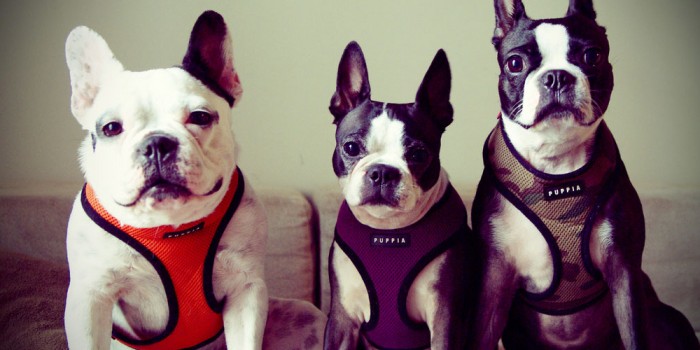Learning from Bus Buddhists
In psychological terms, context is almost everything. Much as we like to think that we know how we will act and react in a given situation, without the richness of...
Dogs, Rats and Consumer Thinking

The decision has been taken: there is to be an addition to the household. A puppy, that the family has named Willow, will be arriving in a few weeks.
As the resident psychologist I have taken on responsibility for training Willow: from what I’ve read this is a reasonably straight-forward exercise involving tasty treats, repetition and the avoidance of saying one thing whilst everything else that’s happening is signalling something else to the dog.
Of course, Pavlov famously demonstrated the nature of conditioned response with a dog and, whilst there is much debate within the dog training world, most training boils down to this principle.
Most people recognise this response mechanism within dogs, after all, unlike us, they don’t have access to the critical thinking processes that we do.
What we tend to focus on much less is our own conditioned responses. We are far more like dogs than we would ever admit to ourselves: indeed, we’re so enamoured with our capacity for critical thinking that we rarely reflect on our conditioned responses.
Any yet, there is abundant evidence that we react in predictable ways to contexts precisely because we have an established sequence of associations in our unconscious minds.
Brands form and leverage these associations all the time: the premium packaging for a premium product placed in a premium position (but that may be indistinguishable from a cheaper alternative when this context is stripped away).
Brand imagery that triggers people to behave with more honesty (Disney), more creativity (Apple) or be more aggressive and take more risks (Red Bull).
Other selling conditioning patterns are sequential. Sensitise someone to a risk and then present a solution: our critical thinking takes a short vacation and be find ourselves drawn to the product.
Ironically, owning a dog is a ripe market for exploiting our own conditioned responses! My wife was delighted at the spill-proof dog bowl she had purchased. I retraced the decision-making sequence: dogs spill their water, that’s messy, someone’s invented a bowl that doesn’t spill.
£10 later the new dog bowl is upon us. But hold on… we haven’t even got the dog yet! How do we know our dog will spill her water? Wouldn’t a flat, heavy disk (the like of which we have many in the kitchen) do the same job? Why would the dog want to flip it’s source of water over? And, having had a dog in my childhood before the invention of the spill-proof bowl, I don’t recall us living in pools of water!
And, incidentally, how difficult is it to empty the thing if the water’s designed not to come out?
As a consumer psychologist this feels to me as predictable as asking someone what they’ve spilt on their shirt and then, as they instinctively look down, the pointing finger is pushed up to their face with an ‘Ahhhhhhhhh!’ noise. Evidently we learn as children about other people’s conditioned responses, but really struggle to see our own.
When it comes to conditioned response in people another area that we have in common with dogs is eating. We might make all sorts of well-intentioned plans to eat sensibly or healthily, but most people lose their way because the conscious intervention is too demanding and, before they’ve developed new habits, the old conditioned responses have taken over. They’re still covering the salad in high fat dressing; they still accept the invitation to ‘go large’ in McDonald’s and they find themselves having the same number of cappuccinos at the same time every day.
One way in which food companies have attempted to make life easier for consumers is by producing low-fat products that enable someone to have the product they want in a particular situation, but make a healthier choice.
Unfortunately, it appears that even deeper-rooted systems mean we can’t have our low fat cake and eat it too.
Recent research on rats found that low fat foods confuse the body.
Researchers divided rats into one of four feed regimes:
1. High fat feed with high fat crisps
2. High fat feed with low fat crisps
3. Low fat feed with high fat crisps
4. Low fat feed with low fat crisps
Rats who were in the second group, with a high fat diet and low fat crisps, gained more weight and had more fatty tissue than when they were given the high fat crisps.
The same researchers found the same effect occurred when artificial sweeteners were used.
They theorise that the body is primed by the taste to prepare for calories, and this triggers a craving that will be satiated at some later point if the food being consumed at the time doesn’t deliver.
So whether saving money or losing weight is your goal, it’s worth considering your own conditioned responses.
And if you’re wanting to understand consumers it’s always worth focusing your attention on the unconscious processes that really drive most of our behaviour.
Source: Susan E. Swithers, Sean B. Ogden and Terry L. Davidson. Fat Substitutes Promote Weight Gain in Rats Consuming High-Fat Diets. Behavioral Neuroscience, 2011; 125 (4)
Image courtesy: Ana Erb